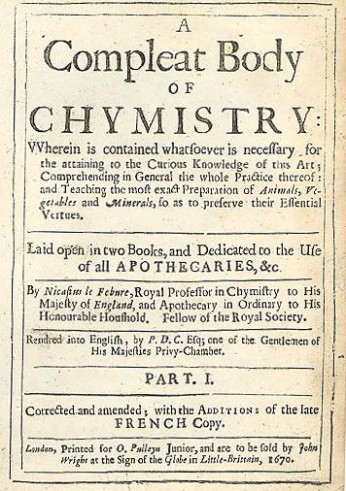This isn’t so much of a “post” as just a handy reference. In time we might develop more commentaries of the subject.
The “processes” of the Alchemical operations, particularly within the “Magnum Opus”, and depending on how one is counting them, varies usually between seven, ten, twelve, and fourteen steps, or processes, many overlapping or inclusive of each other. The “Twelve Gates of Ripley” gives, well twelve: 1) Calcination, 2)Solution, 3)Separation, 4)Conjunction, 5)Puterfication, 6)Congelation, 7)Cibation, 8)Sublimation, 9)Fermentation, 10)Exaltation, 11)Multiplication, 12)Projection.
The “French” school of Lefevre, which passed onto Glaser, in their efforts to promote lab alchemy as having practical daily utility in the life, health, and well being of man, expanded upon these “steps” within the field of medical application, or apothecary. We ought not think that Lefevre’s steps “add” anything to the traditional steps; rather, Lefevre’s processes expand upon what is already in the twelve steps as “macro” processes, subdivided into “micro” steps. Nicholas Lefevre described them in his 1670 “Complete Body of Chemistry”, and Christopher Glaser in 1677 defined many of them further is his “Complete Chymist”–they were listed as:
“limation, raison, pulverization, alcoholization, incision, granulation, lamination, putrefication, fermentation, maceration, fumigation both dry and humid, cohobation, precipitation, amalgamation, distillation, rectification, sublimation, calcination both actual and potential, vitrification, projection, lapidification, extinction, fusion, liquation, cementation, stratification, reverberation, fulmination or detonation, extraction, expression, incineration, exhalation, digestion, evaporation, dessication, circulation, cogelation, crystallization, fixation, volatilisation, spiritualisation, corporification, mortification, and revivification”.
Alchemy has always also been associated with the forge, the “Blind Vulcan” and Hephaestus–so, it should also come as no surprise that many of these apothecary processes were shared with metallurgical techniques. Johannes Rudolf Wagner’s 1863 “Handbook of Chemical Technology” is revealing in that so many of the technological methods employed in his era’s metallurgy clearly harken to earlier Alchemical processes (a fact that itself can be beneficial to contemporary Alchemical practitioners, especially when working with metals becomes an objective).
Now, from a practical day-today point of view, if we consider the breadth and variety of techniques discussed by Lefevre in his text, it sadly puts contemporary Spagyrie to shame–not that contemporary practice is erroneous–but considerably diminished. Thus we ought challenge ourselves to learn more about the applications of the lab side of our Hermetic Tradition, and push ourselves beyond the basic and fundamental preparations commonly taught or practiced in the “Minor Opus”. This might be considered important if we wish to see anything of a revival of the “Traditional Western Medicine” with it being looked upon as having as much to contribute as its Eastern relatives.
On that note, it could likewise be helpful to turn to the East, whose techniques have not been interrupted through time, compare living processing methods with sources such as Lefevre, and perhaps use some of that knowledge in rekindling the Western approaches.
As noted, in time we might more thoroughly develop these some comparisons on this site–for now, as “handy reference”, to set side by side with Lefevre and Glaser, we include a list of techniques from the Chinese system of Pao Zhi–which I like to think of as the Chinese spagyrie. This is derived from Phillippe Sionneau’s book “The Use of Processed Chinese Medicinals”, and his glossary is based on Nigel Wiseman’s “Glossary of Chinese Medical Terms and Acupuncture Points”. For brevity, only the English translation of the terms are being provided here: stone-baked, stir-fired till yellow, stir-fried till scorched, stir-fired till carbonized, stir-fried, vinegar dip calcined, vinegar steamed, vinegar mix fried, dip calcined, scalded, calcined, bran stir-fried, licorice mix-fried, dried, concha powder stir-fried, baked, talcom powder stir fried, ginger mix/or juice fried, gelatinized, wine-steamed, wine mix-fried, rice stir-fried, honey mix-fried, blast-fried, pollen powder stir-fried, indigo processed, sand stir-fried, raw, defatted, earth stir-fried, roasted, fresh, salt mix-fried, oil mix-fried, steamed, cinnabar processed, and boiled.
Ultimately, our lofty goal would involve including comparative Unani and Rasashastra processes, definitions and examples of each process, and a way to see what is common, and different between Lefevre, Pao Zhi, and the two latter systems above.

Nice post, thank you.
Chemyst